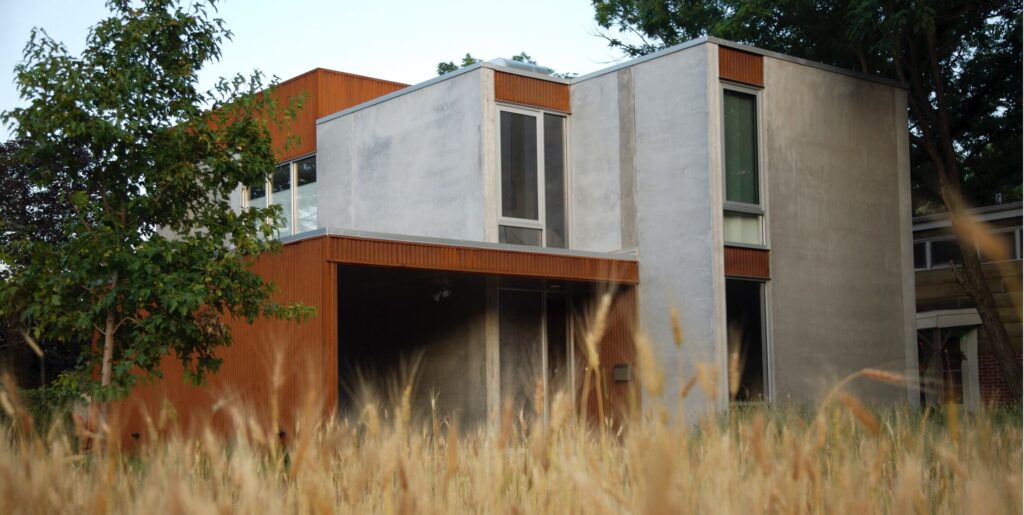
Obtainment of Living Future Accreditation reflects Shelter team’s dedication to sustainability
This week, Shelter Architecture President and CEO Jackie Millea earned Living Future Accreditation (LFA). The new credential reflects her dedication to the aspirations and rigorous sustainability standards of the Living Building Challenge.
The Living Building Challenge is a certification program for construction and design projects that don’t use more resources than they can produce. The goal is not simply to minimize harm to the environment — but to enhance it. Achieving Living Building certification requires meeting some of the most stringent “green” criteria in the industry. A structure must demonstrate performance in seven categories that take into account location, construction materials, water and energy use, contributions to health, happiness and equity, and beauty.
The Living Building Challenge is administered by the International Living Future Institute — the same organization that bestows the LFA. Earning the credential requires completing 36 continuing education credits. The coursework prepares learners to accomplish Living Building objectives through their work.
Continuing a long-standing commitment
Pursuing the accreditation was a natural move for Millea. Sustainable design has been a hallmark of her practice since she co-founded Shelter in 2004. The firm’s team designed one of the first net-zero energy building in the U.S. and the first LEED-H Platinum-certified home in Minnesota. Shelter is also a signatory firm of The 2030 Challenge, a national effort by architects and designers to reduce energy use and carbon emissions within the built environment.
Achieving Living Building certification
“We started Shelter to explore sustainability in the residential market,” Millea recalls. “Today, sharpening our focus on the Living Building Challenge represents a path that goes farther. It’s a holistic approach to building design that makes a place better than it was when the building owner arrived there.”
Living Building certification may be granted to a commercial or residential project of any scale, at any location — whether it’s new construction or renovation of an existing structure. We’ve designed what will be the first CORE Green Certified Building in WI under the Living Building Challenge. Check out the Shell Lake Cabin.
“This design framework embodies ideas and concepts that are important to our clients,” Millea says. “And the program’s core values are the same ones that Shelter talks about each time we come to the table. The Living Building Challenge helps us better understand how our designs can have positive impacts on a given place and the people within it. It exemplifies an outstanding approach to creating better buildings.”
Want to achieve Living Building certification with your project? We can help. Let’s talk.
